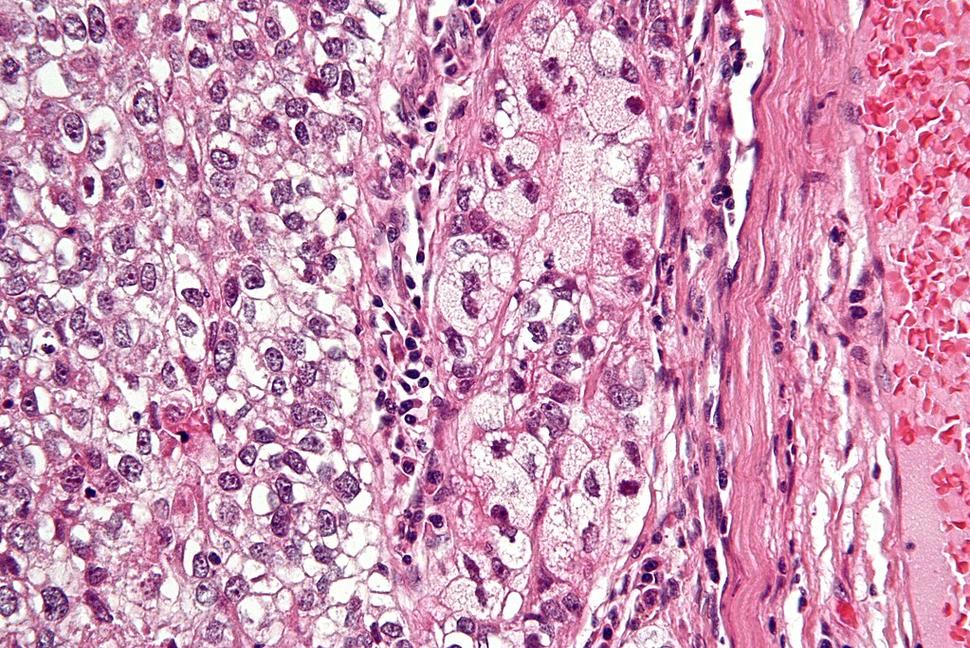Genomic Landscape of Sebaceous Tumors
, by Elise Tookmanian, Ph.D.
Sebaceous carcinoma, cancer that begins in an oil gland in the skin, is a rare but aggressive skin cancer with 1,000 cases per year in the U.S. Additionally, benign and malignant sebaceous tumors can be difficult to differentiate by clinical or histopathologic features. A new study compared the genomic landscape of benign and malignant sebaceous tumors to understand the genetic alterations contributing to cancer formation. The researchers identified molecular changes that could potentially be diagnostic biomarkers or targeted for therapy. The study was published in Clinical Cancer Research on September 17, 2024.
Michael R. Sargen, M.D., assistant clinical investigator in the Clinical Genetics Branch, led this study alongside Dr. Gabriel J. Starrett, investigator in the Laboratory of Cellular Oncology in the Center for Cancer Research. The researchers partnered with multiple extramural institutions to perform the largest multiomics analysis of sebaceous tumors evaluating their genetic alterations and gene expression profiles. This study was the first to complete whole genome sequencing analysis of sebaceous tumors in order to compare benign and malignant tumors. The sequencing analysis revealed a comprehensive picture of the molecular landscape of this cancer, clues to sebaceous carcinogenesis, and biomarkers to identify malignant tumors. The researchers found increased mutations in TP53 (the tumor suppressor gene), chromosome copy number gains (6, 8q, and/or 18), and high tumor mutation burden (>10 mutations/1 million base pairs) in malignant compared to benign tumors.
This study sets the stage for preclinical and clinical studies to evaluate potential therapeutics for this aggressive skin cancer. The high tumor mutation burden in sebaceous carcinomas suggests that immunotherapy could potentially be an effective treatment for this cancer. Additionally, cholesterol biosynthesis was increased in malignant sebaceous tumors compared to normal skin, suggesting that cholesterol modulation could also be a therapeutic approach, which should be investigated further in preclinical models of the disease.
Reference
Starrett GJ et al. Multiomics profiling distinguishes sebaceous carcinoma from benign sebaceous neoplasms and provides insight into the genetic evolution of sebaceous carcinogenesis. Clin Canc Res. 2024.
